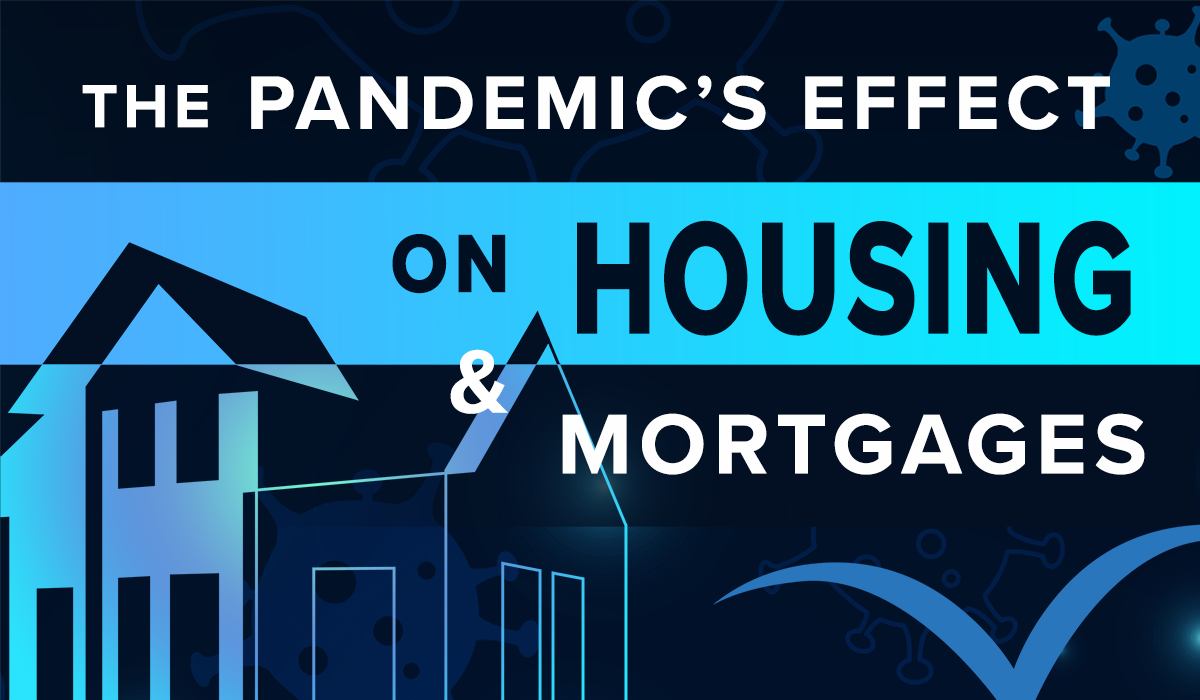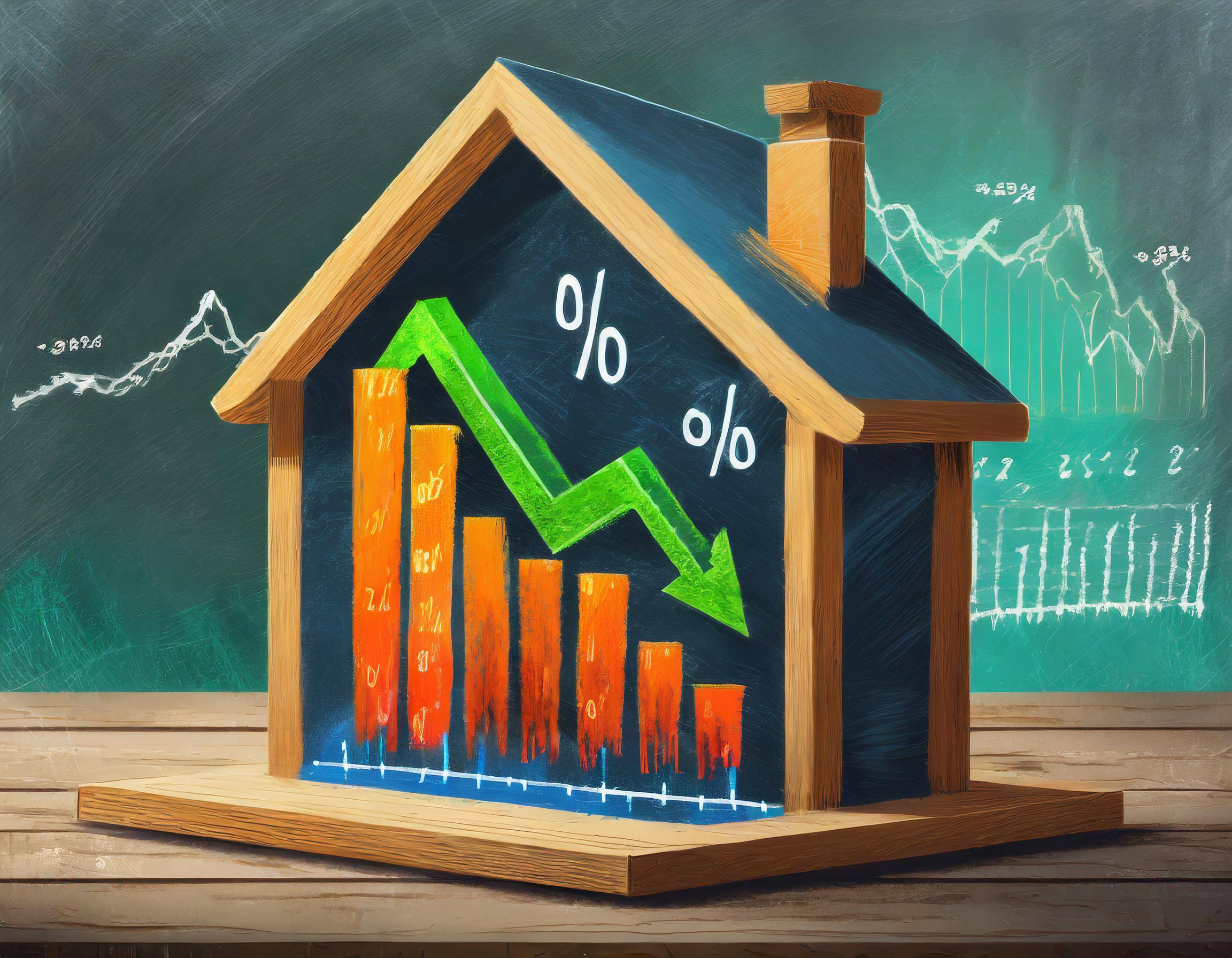The pandemic left its fingerprints all over the housing and mortgage industries as it did on most sectors of the economy. Thanks to extensive media coverage, we watched from our homes as the changes were occurring.
Now, after multiple lockdowns and re-openings, we're taking a look at some of the "long Covid" impacts on housing and mortgages. We found that some of the changes uniquely impacted sellers, while others only affected people looking to buy a home.
Many of the changes were universal - impacting everyone involved with home sales and mortgages. Some may even be permanent.
SUPPLY AND DEMAND
If you were buying or selling a home during the height of the pandemic, you probably had some strange and very unique experiences. Open Houses weren't allowed, digital viewings became the norm, and buyers and sellers had to sign new, Covid disclosure forms for in-person showings.
Those are the things that occurred when homes were actually listed. But, as pandemic life took hold, fewer and fewer homes were listed for sale. Potential sellers kept their homes off the market, initially, out of fear of the little-understood virus.
As time went on, the reasons sellers stopped listing their homes for sale expanded. They included loss of employment, concerns over finding a replacement home, and buying a second home instead of a new primary residence.
On top of all of that, interest rates dropped to historic low levels. Those who could qualify took the opportunity to refinance their mortgages, which further reduced the incentive to sell.
And sellers of existing homes were not the only factor impacting home inventory. New construction came to a stop at the beginning of the pandemic, along with everything else. Recovery has been slow due to a shortage of materials and labor and the rising cost of lumber.
Before the Pandemic, new home construction was already lagging behind demand - but the pandemic added a whole new dimension.
THE PANDEMIC BUYERS
With so few people selling their home - and looking for a new one - where were the buyers coming from? Well, some buyers were already planning to buy a home pre-pandemic, and they were already pre-approved and shopping for the perfect house when it hit.
The "great migration" of buyers soon joined this group. Across the country, working from home was producing a new group of potential homebuyers: people who no longer needing to live close to their workplace and began moving to more affordable locations.
Those locations offered more affordable housing, larger homes with rooms to work and learn in, and better access to the outdoors. Some of these buyers came from large cities, like New York and San Francisco. Many of them had significantly higher incomes than the average income in the smaller towns where they wanted to live.
What this one fact meant is they could afford to pay more for a property. And, with fewer homes for sale, multiple buyers aggressively competed for the available homes. Bidding wars, a common occurrence in larger cities, began to happen in markets across the country.
Property values started increasing as interest rates stayed low. Like turning up a flame under a pot on the stove - the real estate and mortgage industry quickly reached a boiling point.
LONG-TERM IMPACT OF LOW SUPPLY/HIGH DEMAND
If you were, or are still, trying to purchase a home, saying you're "discouraged" might not do enough to describe how you're currently feeling. Let's face it, making offer after offer but never having one accepted is very frustrating.
There's a name for what you're feeling: Buyer Fatigue. And You're not alone. And the advice of real estate professionals is don't give up. We'll throw in our tips for you here:
1. Don't bid on homes listed at your price point.
Homes are listed below their actual market value to create a little FOMO (fear of missing out) - as if the lack of houses for sale doesn't make you feel that way already. Add a bidding war on top of that, and the final price is likely higher than the current market value.
Instead, start by looking at the most recent comparison of listing price versus actual sold price. This will help you estimate the approximate list price to target as you begin your search. It should also be below what you can "afford." Now, as the bidding war happens - you can compete.
2. Don't panic about property inspection reports.
Even when buying new construction, things are guaranteed to come upon the inspection report. They can sound scary, too, causing buyers to bail after reading the report. After struggling to get into contract, walking away based on an inspection report is hard to swallow.
Our advice is to take some time and think over the report. Talk to your real estate agent and, if possible, a general contractor to get their advice on the severity of the items noted in the report. Having another opinion on the cost of repairs is critical.
3. The cost to fix up a Fixer-Upper has gone up
Lumber price have increased, as have the cost of many other things due to supply chain issues. The higher costs and scarcity also apply to contractors who can do the repairs and remodeling for you. Contractors have been in short supply during the pandemic and there is so much demand for them that they can be picky about which jobs they accept. With a limited supply of contractors and high demand for them, expect to pay more for their services.
WHAT ABOUT MORTGAGES?
For buyers who win the bidding war game, the next stop is the mortgage process. Mortgage companies have gone through the same loss of employees and disruption to typical workflows as every other industry. Plus, there was a simultaneous refinance boom happening which means that turnaround times slowed significantly.
Changes were made to expedite the process, but there are a few things that may still impact transactions:
- Appraisal issues: appraisers left the industry at a higher rate than normal during the pandemic. They retired ahead of schedule or left for other career opportunities.
- Self-employed borrower qualifying changes: during the pandemic, the lack of current, filed tax returns by employed borrowers complicated the ability to provide proof of continuing income. What's needed are the most recent two years of tax returns, along with a year-to-date profit and loss statement and three months of business bank statements.
Some positive changes to VA loans have also been adopted during the pandemic. The government simplified the VA loan process, relaxed inspection rules, and veterans can now pay for their own pest inspections. This is a big win for vets buying a home in California and will help their offer be more competitive.
Given the pandemic's impact on the housing and mortgage industries, our best advice is to keep saving as aggressively as possible while trying to get an offer accepted. When you find a home and lock in that low-interest rate, saving money will have been one of the best decisions you made.








